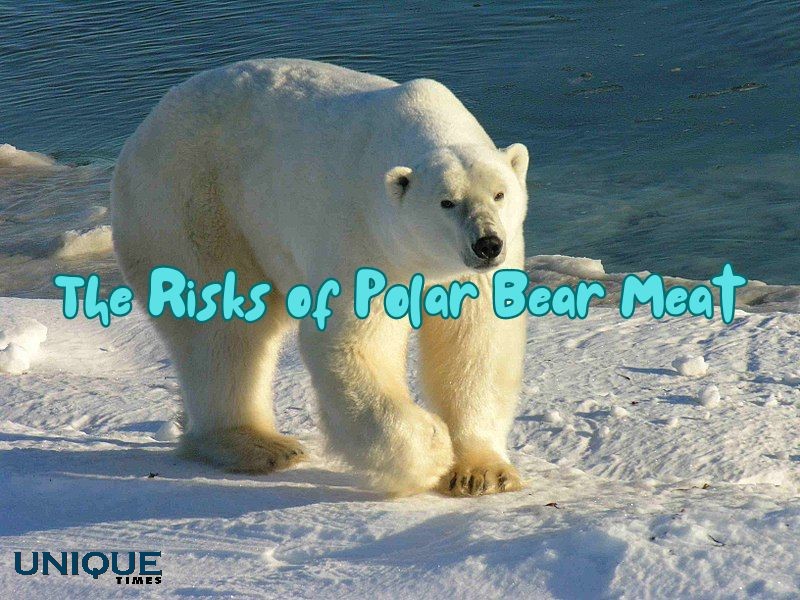The Risks of Consuming Polar Bear Meat: Understanding Hypervitaminosis A and its Side Effects

Polar bears, majestic creatures of the Arctic, have long been an integral part of indigenous Arctic cultures, providing sustenance and raw materials for survival. However, the consumption of polar bear meat, primarily the liver, presents a significant health risk due to its high vitamin A content. Hypervitaminosis A, an acute condition caused by excessive vitamin A intake, can lead to severe health complications, emphasizing the critical need for awareness and caution when consuming polar bear meat. Let’s delve into the complexities of hypervitaminosis A and its detrimental effects on human health.
The Arctic Diet and Cultural Significance of Polar Bear Meat: In the Arctic regions, the consumption of polar bear meat has historical and cultural significance, serving as a vital source of sustenance and nourishment for indigenous communities. Traditionally, every part of the polar bear was utilized for various purposes, reflecting the deep cultural and spiritual connection between the people of the Arctic and their natural environment. However, the unique physiology of polar bears, particularly their liver’s high vitamin A concentration, poses a significant health risk that necessitates caution and informed dietary practices.
Understanding Hypervitaminosis A: Causes and Symptoms: Hypervitaminosis A, an acute condition resulting from an excessive intake of vitamin A, can lead to a range of adverse health effects, including nausea, dizziness, headaches, and even more severe complications such as liver damage, bone abnormalities, and central nervous system disorders. The body’s inability to metabolize and excrete excessive amounts of vitamin A can lead to the accumulation of toxic levels in the body, manifesting in a spectrum of symptoms that require immediate medical attention and intervention.
Polar Bear Meat and Vitamin A Toxicity: Polar bear meat, particularly the liver, is known to contain dangerously high levels of vitamin A, making it one of the most potent sources of vitamin A toxicity among all animal meats. The liver, being a storage organ for this fat-soluble vitamin, accumulates a significant concentration of retinol, the active form of vitamin A, which, when ingested in large quantities, can overwhelm the body’s natural detoxification mechanisms, leading to a rapid onset of hypervitaminosis A.
Implications for Indigenous Communities and Conservation Efforts: In the context of indigenous communities that rely on traditional hunting practices for subsistence, the consumption of polar bear meat remains deeply ingrained in cultural and nutritional practices. Balancing the preservation of cultural heritage and the promotion of public health awareness necessitates a comprehensive approach that emphasizes the dissemination of information regarding the risks associated with consuming polar bear meat, coupled with the implementation of sustainable hunting practices and conservation efforts that protect the Arctic ecosystem and its diverse wildlife.
Promoting Public Awareness and Dietary Education: Raising public awareness about the risks of hypervitaminosis A and the dangers associated with consuming polar bear meat is essential in promoting informed dietary choices and responsible consumption practices. Educational initiatives, community engagement programs, and collaborations between healthcare professionals and indigenous communities can play a pivotal role in fostering a comprehensive understanding of the health risks posed by the consumption of polar bear meat, encouraging the adoption of safer dietary alternatives and sustainable food practices.
Sustainable Alternatives and Health Consciousness: In light of the risks associated with consuming polar bear meat, promoting sustainable dietary alternatives and fostering a culture of health consciousness can serve as effective strategies in mitigating the prevalence of hypervitaminosis A. Encouraging the consumption of nutrient-rich foods from sustainable sources, promoting a balanced diet rich in diverse fruits and vegetables, and advocating for the preservation of Arctic ecosystems are vital steps in safeguarding public health and the delicate ecological balance of the Arctic region.
Picture Courtesy: Google/images are subject to copyright








